A Guide to Corporate Outings and Tours in India | 2025
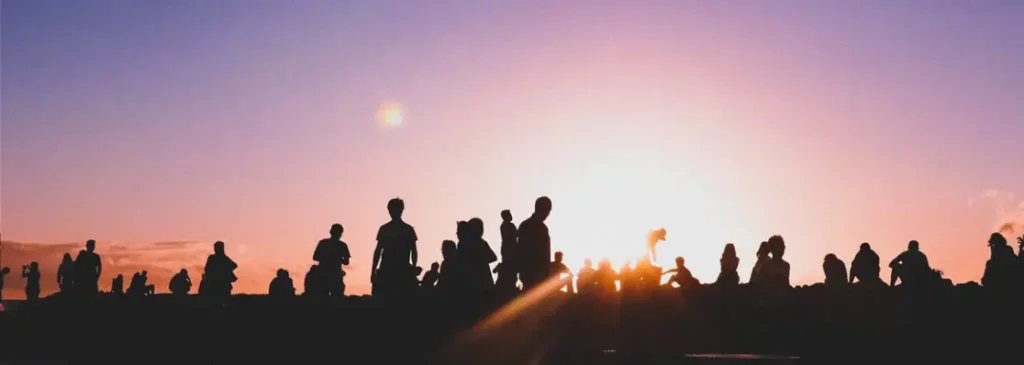
With the back-to-the-office culture now a standard, you can treat your employees to a break from their usual work routine and take them out for an outing or a vacation. With the perfect balance of work and leisure, these travels will surely enhance work performance and rejuvenate people to put in a better effort in their job roles. It can also serve as an icebreaker between colleagues and enhance work relationships. Too lazy to plan your Corporate Outings and Tours? Try The Tarzan Way – it’s like having your own AI trip buddy that plans everything around your vibe. “A Guide to Corporate Outings and Tours in India” These trips are the best solution to avoid burnout from work, as they act as a getaway from their usual office environments and enjoy work as well as unwind from the stress. Here is a list of things you can do, places you can visit, and stay during an outing or trip with your team and colleagues: Kashmir Manali Nainital Darjeeling Jaisalmer Goa Alleppey Wayanad Andamans 1. Kashmir Credit: BBC Kashmir is uncontested when it comes to its beauty and offerings. It is one of the most exotic destinations in India and rightly so, as its landscapes are so pristine, its valleys extremely captivating, lofty mountain ranges, and enticing lakes and rivers that traverse across the valley. It is also a haven for adventure seekers and nature enthusiasts, as the various towns of Kashmir are brimming with activities and beautiful sights. A corporate trip to this “heaven on earth” will surely enlighten the stressed bodies and souls of the employees. Things to do: Take your team for a trek among the famous and beautiful trekking trails of the Kolahoi Glacier at Sonamarg. Rent boats and take a moment to enjoy the beauty of Dal Lake and shop on the floating markets on the lake while at it. Places to visit: Gulmarg, Pahalgam, and Sonamarg Best time to visit: May to October Where to Stay: Radisson Srinagar, The Heritage Group of Houseboats. 2. Manali Credit: Vishal Bhutani An enchanting hill station tucked amid the Himalayan ranges, Manali is one of the most exciting destinations for a corporate trip. Manali will cater to people who love to spend time in the confines of quaint surroundings and also those who thrive off adventures. It has something to offer to people of any kind and personality. The beautiful streams, rivers, and hills covered in pine trees and orchards will serve as a getaway experience for tired office workers. Things to do: Pay a visit to the hot water springs of Vashisht. Relax and detoxify with your colleagues amid the sounds of the forest. Try river rafting with your team at Tattapani and the Beas River. Go paragliding and witness the beauty of Manali and the Kullu Valley from above. Places to visit: Solang Valley, Rohtang Pass, Naggar Castle Best time to visit: March to July Where to Stay: Echor Himalayan Aurum Manali, The Orchards Green Resorts and Spa. 3. Nainital Credit: Nainital Corbett Tourism A perfect hill station to escape the scorching summer heat and one of India’s most loved getaway destinations is Nainital. Nestled in the lap of the Kumaon Hills, Nainital makes a great choice for a corporate trip. The town is surrounded by exquisite mountain ranges, pine forests, and stunning lakes that are a treat to the eyes and soul. It will no doubt please people from the cities looking for an escape to the hills for a vacation. Things To Do: Take a safari ride with your colleagues at Jim Corbett National Park and witness the varied wildlife bounty. Enjoy a day out trying out activities offered at Devbhoomi Outdoor Adventure Park. Try the ropeway ride at the Corbett waterfalls. Places To Visit: Nainital Zoo, Tiffin Top, Naina Peak Best Time To Visit: March to June Where To Stay: The Kumaon Retreat, Orchid Nainital 4. Darjeeling Credit: Arvind Telkar A relaxing hill station where time slows down due to the unhurried pace of life, Darjeeling is a soulful destination to rejuvenate the tired mind and body. With spectacular sunrises and sunsets, views of the snow-capped Himalayan ranges, iconic movie locations, and charming tea gardens, anyone walking the streets of Darjeeling will reawaken to the beauty of life and nature. Things To Do: Wake up early and head out with the whole team to witness the Sunrise at Tiger Falls. Visit the beautiful tea gardens, take group pictures, and unwind amid the beautiful landscapes. Shop at the local markets for tea leaves, Pashmina shawls, and churpi, a local, hardened cheese. Places To Visit: Himalayan Mountaineering Institute, PNZ Zoological Park, Ghoom Monastery Best Time To Visit: April to June Where To Stay: Istana Resorts and Spa, The Elgin 5. Jaisalmer Credit: National Geographic The vibrant city of Jaisalmer, famous for its traditions and cultural heritage, is indeed one of the most exciting places to visit in India. Jaisalmer is also home to a lot of royal heritages that are evident from its architectural constructions of forts, havelis, and castles. The rustic dunes, royal palaces, bright-lit temples, and bazaars will serve as the perfect places for outings and sightseeing with colleagues. Things To Do: Go parasailing at Kanoi and enjoy the thrill and excitement of this activity. Explore the dunes with Quad bikes at Sam Sand Dunes with your team for an unforgettable experience. Explore the various enticing bazaars and shop for your loved ones. Places To Visit: Gadisar Lake, Jaisalmer Fort, Desert National Park, Patwon ki Haveli. Best Time To Visit: November to March Where To Stay: Pansari Palace, The Desert Palace 6. Goa Credit: Sumit Sourav via Unsplash Goa, the most iconic beach destination in India, is also one of the best places to enjoy a trip with your work colleagues. The sounds of waves hitting the shore, sunlight beaming on your face with a light breeze in the air, and clear skies all culminate to make Goa a desired destination to work and
Goa Itinerary for 3, 5 & 7 Days: Beaches, Culture & Nightlife
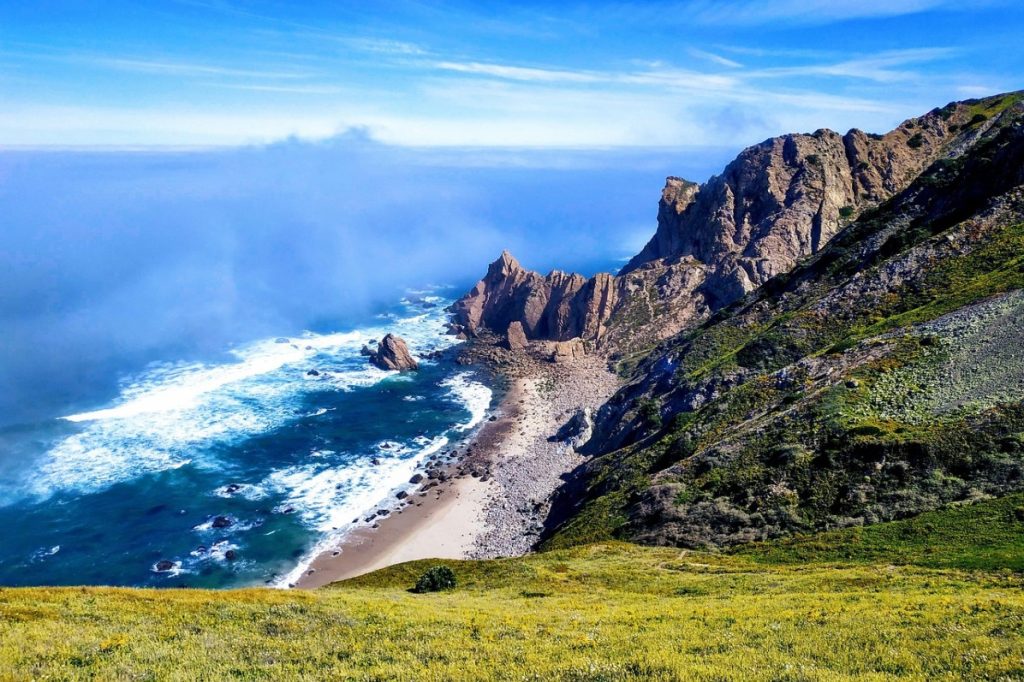
Goa has a way of attracting every kind of traveller – from party lovers to peace-and-quiet seekers. With its golden beaches, Portuguese charm, and sunny skies, each area in Goa is practically a story waiting to be told. But the big question is this – how many days do you really need in Goa? Whether you have something like a long weekend or a full week, this Goa itinerary will help you get the most out of it. To break it down – 3 days to allow for a quick escape, 5 days for a more unhurried trip, and 7 days for the full “susegad” life. 3-Day Goa Itinerary: A Short and Sweet Beach Break If you’ve only got three days, stay in North Goa. It’s lively, easy to get around, and offers the perfect mix of beaches, nightlife, and markets. Day 1: Classic Goa Start Begin at Calangute Beach, the heart of Goa tourism. Try water sports like jet skiing or parasailing at Baga Beach. Visit Anjuna Flea Market for souvenirs, boho clothes, and handmade jewelry. Dinner at Britto’s or Souza Lobo – classic beach shacks with live music. Stay overnight near Calangute for easy access to all the action. On Day 2: History & Sunsets Start your morning at Fort Aguada, one of the best Goa tourism places for panoramic sea views. Grab lunch in Candolim, then relax at SinQ Beach Club or Tito’s Lane at night. Want to know when to catch the right party crowd? Read our Best Time to Visit Goa for Parties vs Peace. And on Day 3: Cultural Goa Visit Old Goa Churches – Basilica of Bom Jesus and Se Cathedral. Stroll through Fontainhas, the Latin Quarter, filled with Portuguese-era homes and colorful streets. End your trip watching the sunset at Dona Paula Viewpoint. 5-Day Goa Itinerary: The Perfect Balance of Buzz & Bliss Five days let you enjoy both North and Central Goa – mixing beaches, heritage, and relaxation. Day 1–2: Follow the 3-day plan for North Goa On Day 3: The Cultural Loop Visit Mangueshi Temple and Reis Magos Fort – historical gems often skipped by tourists. Stop by Panjim Church for postcard-perfect photos. Enjoy Goan food at Mum’s Kitchen or Vinayak Family Restaurant. On Day 4: Secret Escapes Head to Ashwem or Morjim, some of the most peaceful family-friendly beaches in Goa. Enjoy yoga sessions or breakfast by the beach. If you prefer quiet sands, check out Best Hidden Beaches in Goa for Peaceful Escape!! And on Day 5: Old Town & Sunset Cruise Explore Panjim’s local markets – perfect for cashew nuts, spices, and handicrafts. Take an evening Mandovi River cruise for live Goan music and dinner. Stay overnight in a boutique hotel for a cozy end to your Goa trip. Want a deeper dive into Goan heritage? Don’t miss Goa Beyond Beaches: Cultural & Heritage Experiences. 7-Day Goa Itinerary: Experience Goa Like a Local A week in Goa means you can finally slow down and soak in its rhythm – from sunrise yoga to late-night laughter under palm trees. Day 1–2: North Goa Vibes Begin with Calangute, Baga, and Candolim. Indulge in water sports or cafe-hopping in Anjuna. Party at Cohiba, SinQ, or Hammerz. On Day 3: Old Goa Heritage Trail Visit the Basilica of Bom Jesus, the Se Cathedral, and the Arch of the Viceroys. Explore Fontainhas for local art galleries and quaint cafes. On Day 4–5: South Goa Serenity Drive to Colva, Agonda, and Palolem – where peace replaces the party. Try kayaking, beach yoga, or dolphin watching. South Goa Unplugged: Exploring the Quieter Side will help you pick the calmest beaches. And on Day 6: Hidden Corners & Local Eats Visit Butterfly Beach or Kakolem Beach – two hidden spots covered in Hidden Beaches in Goa Only Locals Know About. Try local delicacies – Goan fish curry, poi bread, and bebinca. Shop at Palolem Market or Mapusa Bazaar for handmade crafts. And on Day 7: Leisure & Workation Vibes Spend your last day working from a beachfront café or just relaxing. If remote work is your thing, check 13 Best Places to Have an Amazing Workation in Goa. Wrap up your trip watching the sunset at Cabo de Rama Fort. Best Places to Stay in Goa North Goa: Stay near Baga or Calangute – easy access to nightlife and beaches. South Goa: Opt for serene resorts near Agonda or Palolem. Boutique stays: Fontainhas and Panjim offer cozy colonial-style homestays. If you’re planning a workcation or longer stay, Goa packages often include hotel, bike rental, and airport transfers at great rates. Insider Tips for the Perfect Goa Trip Best time to visit Goa for tourists: November to February – ideal weather for beaches and parties. What to pack for a Goa trip: Cotton clothes, sunscreen, flip-flops, hat, and a light jacket for evenings. Getting around: Rent a scooter for flexibility. Local cuisine: Don’t miss vindaloo, xacuti, and fresh seafood thalis. Goa tourism tip: Avoid weekends for quieter beaches. Planning a larger group outing? Our Guide to Corporate Outings and Tours in India might inspire your next team trip idea. FAQs 1. How many days are ideal for a Goa trip? 5 to 7 days are perfect to enjoy both North and South Goa comfortably. 2. Which are the most family-friendly beaches in Goa? Miramar, Colva, Ashwem, and Mandrem are great for families. 3. What’s the best time to visit Goa for tourists? November to February for the best weather and beach activities. 4. Where should I stay for nightlife? Baga, Calangute, and Candolim are the best spots for nightlife and cafés. 5. What are some quiet beaches for peace lovers? Agonda, Butterfly, and Kakolem – explore them in Hidden Beaches in Goa Only Locals Know About. 6. Is South Goa worth visiting for first-timers? Absolutely – South Goa is the serene side of the state. Check South Goa Unplugged for ideas. 7. Can I plan a Goa workation? Yes! Goa has several co-working stays –
Hidden Beaches in Goa Only Locals Know About
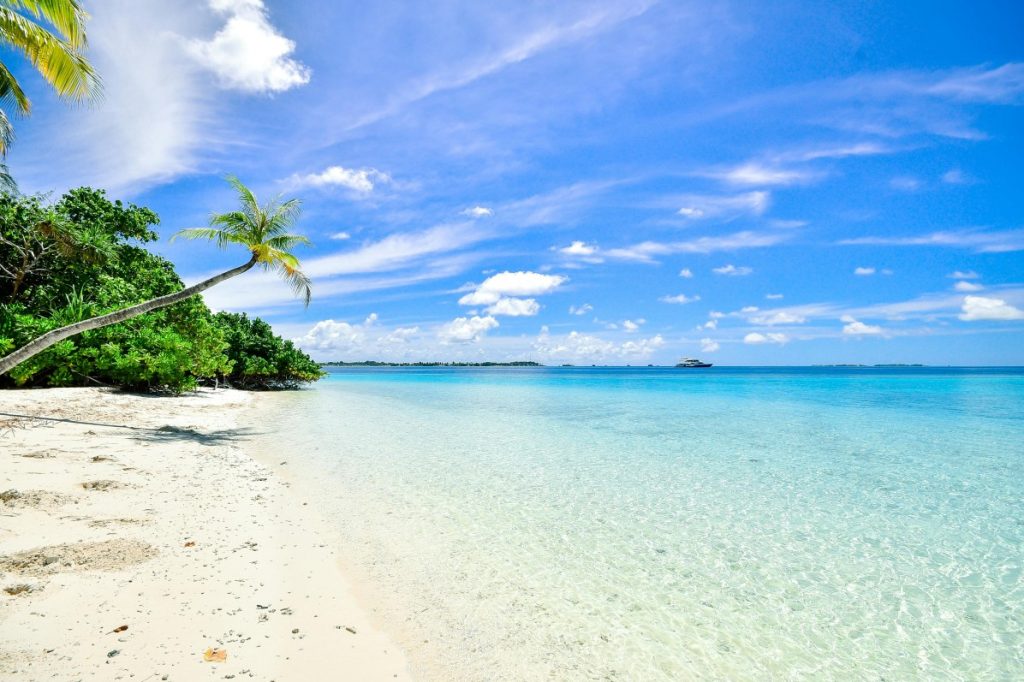
While Goa is known for its nightlife and lively beaches, ask a local, and they will share a little secret – the true Goa is found farther from the crowds. It is these locations that do not have beach shacks playing EDM music, where you can listen to the sound of the waves crashing and the wind blowing through palm trees. In this blog, we’ll explore the hidden beaches in Goa only locals know about – where peace, raw beauty, and a touch of adventure meet. Whether you’re a traveler seeking solitude, a photographer chasing unspoiled views, or someone just tired of tourist traps, this one’s for you. And if you ever feel lost while planning your route, The Tarzan Way – an AI-powered personalized travel itinerary planner – can help you discover these offbeat corners based on your interests. Why Discovering Hidden Beaches in Goa is Worth It Although Goa tourism often depicts crowded sands and party lights, the essence of the state consists of its pristine beaches. These hidden beaches in Goa are perfect for travelers who want an experience that is different from the typical tourist experience – raw landscapes, serene swimming, and authentic local life. Here’s what makes them special: Quiet & Peaceful: No tourist rush, just you and the sea. Local Culture: Small fishing villages and homestays instead of luxury resorts. Affordable: You’ll find budget-friendly hotels in North Goa nearby – often half the price of the busy areas. Eco-friendly Vibe: Less plastic, more palms, and cleaner sands. How Locals Find These Beaches Most of these secluded beaches in Goa aren’t marked on big travel maps. Locals usually get there through shortcuts – dirt roads, forest trails, or even small boat rides. Here are a few tips if you’re planning to explore: Ask a fisherman or cafe owner. They often know which paths lead to lesser-known coves. Use scooters. Narrow Goan roads are perfect for bikes. Avoid large cabs. Many roads near these beaches are too tight for cars. Travel in the dry months (Oct–Apr). Monsoons can make trails slippery. If you’re wondering exactly how to reach hidden beaches in Goa, a combination of local guidance and a bit of adventure spirit goes a long way. The Best Hidden Beaches in Goa Only Locals Know Ready to step away from the touristy sands? Here are some of the best hidden beaches in Goa – real gems that even regular visitors often miss. 1. Butterfly Beach Tucked near Palolem, Butterfly Beach is only accessible by boat or a jungle trek. Shaped like a butterfly, this cove offers turquoise water, dolphins, and sunsets worth the effort. Tip: Visit early morning for total solitude. Also check our blog Best Hidden Beaches in Goa for Peaceful Escape!! for similar offbeat gems. 2. Kakolem (Tiger Beach) Probably Goa’s most secret stretch – few tourists even know it exists. It sits near Cabo de Rama Fort and requires a short hike downhill. Once there, you’ll find golden sand and crystal-clear water. Tip: Carry water – no stalls here! If you’re into forts and history, you’ll love reading Goa Beyond Beaches: Cultural & Heritage Experiences. 3. Cola Beach Half beach, half lagoon, Cola Beach feels like two worlds meeting. You can kayak in the lagoon or just relax by the blue water. Perfect for: Couples or anyone wanting a quiet afternoon. It’s one of those family-friendly beaches in Goa that’s peaceful yet safe for kids. 4. Galgibaga Beach This one’s special – not only is it serene, but it’s also a turtle nesting site. Located in South Goa, it’s perfect for those who want to blend nature and calm. Visit between December and February for turtle sightings. Want more such peaceful southern spots? Check out South Goa Unplugged: Exploring the Quieter Side. 5. Hollant Beach Close to the airport but somehow untouched by crowds. Great for watching fishermen at sunrise and grabbing chai from roadside stalls. Fun fact: Locals call it “the sunrise beach” because the waves face east. 6. Velsao Beach A long, quiet beach south of Bogmalo – perfect for evening walks and seashell collecting. Families love it here because of the clean, shallow water. 7. Kakrajal & Arambol’s Hidden Stretch Walk a bit north of Arambol’s main beach and you’ll find quiet corners where locals chill after sunset. Yoga, drum circles, and quiet cafes – all minus the chaos. 8. Cola Backwaters & Hidden Lagoon Ideal for travelers who want to try camping on hidden beaches in Goa. Several eco-stays offer tents or bamboo huts right by the water. 9. Betul Beach Near the mouth of the Sal River, Betul is where you’ll find peace, a few fishermen, and maybe a dolphin or two. The nearby fort adds an old-world charm. Visit Betul Fort and then read Goa Beyond Beaches: Cultural & Heritage Experiences to learn more about its history. Best Time to Visit Hidden Beaches in Goa The ideal time depends on what you want: October to March: Clear skies, calm waters – perfect for swimming. April to May: Hot but great for solitude. June to September (Monsoon): Magical greenery but strong waves – not safe for swimming. If you want to decide between calm or chaos, our guide “Best Time to Visit Goa for Parties vs Peace” breaks it down beautifully. Sample 3-Day Hidden Beach Itinerary If you want to experience these without rushing, here’s a simple Goa itinerary: Day 1 – South Goa: Start at Butterfly Beach (morning boat ride) Lunch at Palolem or Agonda End at Cola Lagoon for sunset On Day 2 – Peaceful Corners: Visit Galgibaga and Betul Try yoga or kayaking near Cola Stay overnight at a local homestay or eco-hut And on Day 3 – North Goa Exploration: Ride to Arambol’s hidden stretch Stop at Velsao on the way back Wrap up with local Goan seafood at a beach shack Need more ideas? Don’t miss Top Attractions to Include in Your Goa Travel Itinerary. And if planning feels like too
Perfect 7-Day Goa Itinerary Blissful North & South (2025)
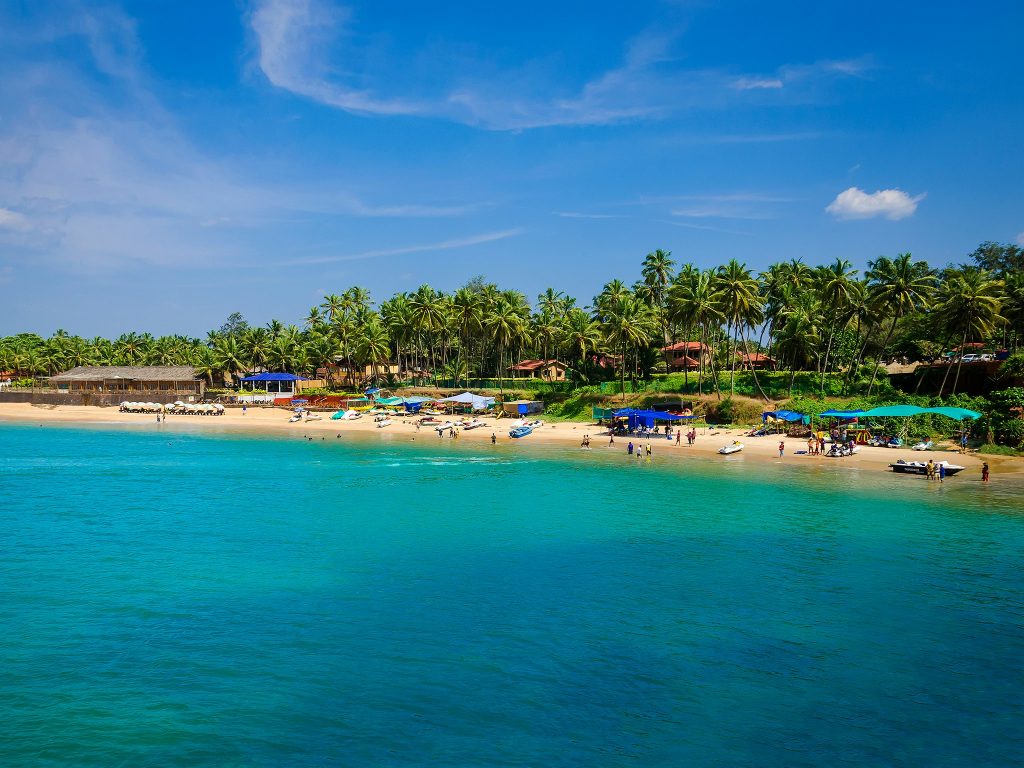
Goa is justly famous for its beaches, but this former Portuguese colony is characterized by much more. It is also home to some of the most stunning waterfalls in India, Indo-Portuguese architecture, ancient temples, and a delightful multicultural heritage. Goa is also the only part of India with a significant European influence, a portion of Konkan soul, and a unique, rich, cultural tapestry. “The Perfect 7-Day Goa Itinerary” For first time Goa visitors differentiating between the party atmosphere of North Goa and the calm, lush, and lovely landscapes of South Goa can be a challenge. Why not get the best of both? Too lazy to plan your Goa trip? Try The Tarzan Way – it’s like having your own AI trip buddy that plans everything around your vibe. Their 7-day Goa plan is the perfect mix of chill beaches + cultural feels. This Goa week-long trip is intended to be a pack itinerary to sample the active culture of the region. The 7-day Goa itinerary is designed to be a time balance between relaxation pants and culture boots. For Day 1, Discover the Buzzing Beaches of North Goa On the first day in Goa, you should visit the beautiful beaches. The North Goa beaches are filled with activity. You may spend the holiday in the busy, tourist-loved beaches such as Vagator or Baga. If you want to relax, you can spend the holiday at Morjim beach. You can spend the day at the beach and enjoy swimming, sunbathing and water sports such as parasailing or banana rides. Pro Tip: You should get a scooter. You can visit Calangute, Baga, Anjuna and other North Goa beaches with your scooter. It is the most popular method of transport. Day 2: Check Out the Unique Attractions in Panjim The capital of Goa is Panjim or Panaji and the heart of the state. It offers a perfect blend of culture, shopping, and history. Spend the morning in the Fontainhas Latin Quarter and then visit the narrow streets and enjoy the beautiful, colorful Portuguese houses. In the evening, the tourists can enjoy the street market filled with local and unique merchandise, live music andstreet performances. Be sure not to overlook the various street food vendors situated in Panjim. To gain a true understanding of the area, you should sample some of the local Goan treats, particularly the chorizo pav and the fish cutlets. Day 3: Discover Goa’s Historical Landmarks Leave the third day for the history of Goa. Go to Old Goa (Velha Goa), a location that is a UNESCO World Heritage site and used to be the capital of the Portuguese Indies, and the most magnificent Old Goa. Go to the awe inspiring Basilica of Bom Jesus, where the mortal remains of St. Francis Xavier rest, and to the imposing Sé Cathedral. Then, in the afternoon, you go back in the direction of Panjim in order to see historic forts, either Reis Magos or Fort Aguada, to appreciate their history and spectacular views of the sea. Pro Tip: In Old Goa, you should hire a licensed guide. The history of the monumental churches and colonial buildings is enhanced for a reasonable price by their narratives and knowledge. Day 4: Southern Voyage to Relax and Camp at Cola Beach Leaving behind the South’s bustle, Cola Beach is in the South Goa region. South Goa is cleaner, more fully, and more peaceful. Head to Cola Beach, for it is one of the understated marvels of Goa, famous for its lagoon. For the rest of the day, bask in the glory of nature, and at night, experience the wonder that is camping on the beach. Relax, the locals have improvised huts as well as deluxe tents for you to choose from. Pro Tip: Cola Beach. Camp on the beach. Relax, the locals have improvised huts as well as deluxe tents for you to choose from. Day 5: Gaze at the Horizon from Cabo De Rama Fort The route to Cabo De Rama is one of the oldest in Goa, and the most dramatic. It sits on a cliff above the beach, at the middle of Agonda and Cavelossim. It has one of the best views of the Arabian Sea. It is said that Lord Rama and Sita spent some of their exile in the fort, making it a rewarding route to the excellent views and rich history. Pro Tip: Make sure you wear proper shoes as you explore the rocky paths in the fort. There isn’t much in the way of shops, so bring your own water and snacks. Day 6: Scavenge the Streets of Palolem If you find the solitude of the South a little too much, you can head to Palolem beach. It is much livelier, and one of the most beautiful beaches in the South. It is well known for its crescent shape, and calm waters. The beach is lined with shops that sell clothes, souvenirs, and trinkets. It is a great place to practice your bargaining skills. Pro Tip: If you are looking for a unique Goa’s nightlife, you can check for a Silent Noise party at Palolem, or the nearby Patnem beach. You are given wireless headsets and can choose different DJs to listen to, making for a surreal party experience. Day 7: The Final Day of Leisure Your final day is to be spent doing anything you wish, be it revisiting your favorite beach, attending a Goan cooking class, getting an Ayurvedic massage, or simply hanging out at a beach shack with a book and a drink, enjoying all the final moments of your Goan paradise before heading to the airport. Pro Tip: For an authentic Goan meal, you may want to finish your trip at a local restaurant and enjoy some fish curry and rice or prawn vindaloo. Still Have Some Doubts in Your Mind “FAQs”: Q. What are the things to do if I have 1 day in Goa? A: Hit the buzzing beaches of North Goa —
Complete Bali Itinerary (5, 7, 10 Days)
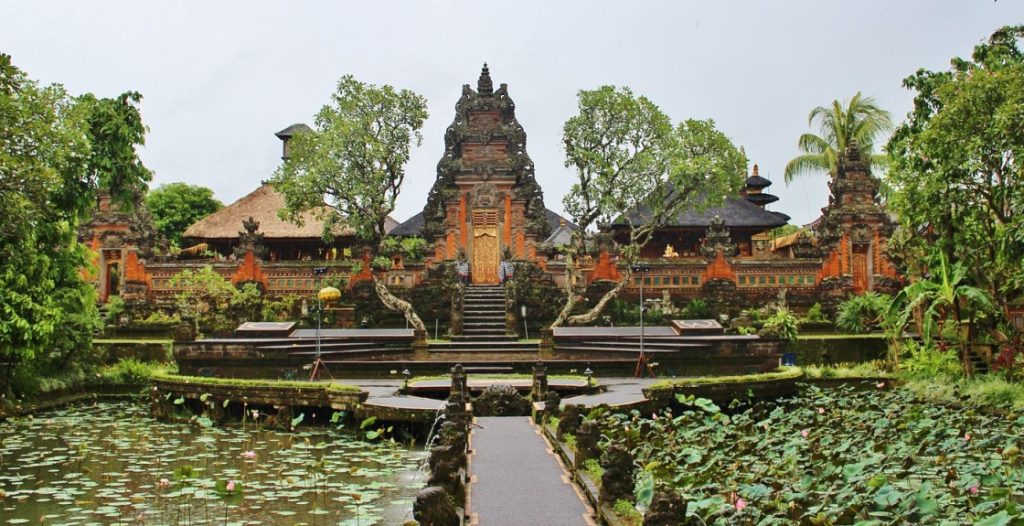
Bali is one of those places that never disappoints. Whether you are interested in beautiful beaches, jungle treks, ancient temples, or candlelit dinners on the beach, Bali has it all. However, the problem lies in the fact that with so many things to do, how do you plan your days without missing anything? That is where this Bali travel itinerary guide will help you! Whether you have 5 days, 7 days, or 10 days, we can break it down – so you know what to do, when to do it, and how to get the best out of Bali. And to top it off, with The Tarzan Way, an AI-based Bali travel planner – you will not only get a generic plan, but you will also get an itinerary created specifically to you and your interests. Think of it as a Bali trip planner, but without the stress. Why You Need a Bali Travel Itinerary Bali may seem small on the map, however, once you start your explorations you will quickly find there is far too much to see in just a few days. A well-planned Bali travel guide can help you to enjoy all that beautiful beaches, culture, and adventure have to offer, without spending more time in traffic than enjoying the island itself. If you are looking for a Bali travel guide, then you have come to the right place. We will provide you with a day by day itinerary for parts of 5, 7, and 10 days. 5-Day Bali Itinerary Perfect for a short getaway or if you’re stopping over during a longer trip through Southeast Asia. Day 1: Arrival + Seminyak Vibes Check into your hotel/villa in Seminyak. Stroll the beach, catch the sunset at Ku De Ta, and enjoy Balinese cuisine. Day 2: Uluwatu + Beaches Morning at Padang Padang or Dreamland Beach. Visit Uluwatu Temple for its cliffside views. Catch the famous Kecak Fire Dance at sunset. Day 3: Ubud Cultural Tour Tegallalang Rice Terraces. Sacred Monkey Forest Sanctuary. Traditional dance performance in Ubud Palace. Day 4: Adventure Day White-water rafting in Ayung River OR Mount Batur sunrise trek. Relax in natural hot springs post-adventure. Day 5: Tanah Lot + Departure Explore Tanah Lot Temple in the morning. Do some last-minute shopping in Canggu or Seminyak before heading home. Tip: Checkout our blog- BALI’S TOP TRAVEL PICKS: ICONIC AND HIDDEN GEMS, to find the hidden gems of Bali. 7-Day Bali Itinerary One week gives you enough time to balance beaches, culture, and a little adventure. Day 1: Arrival in Canggu Chill at Echo Beach. Try surfing or enjoy sunset cocktails at La Brisa. Day 2: Ubud Highlights Visit Tegallalang Rice Terraces. Explore Ubud Art Market. Watch a traditional Balinese performance. Day 3: Adventure + Nature Mount Batur sunrise trek. Coffee plantation tour. Relax at Tegenungan Waterfall. Day 4: Nusa Penida Day Trip Kelingking Beach, Broken Beach, Angel’s Billabong. Snorkel with manta rays. Day 5: Uluwatu & Jimbaran Spend your day at Melasti or Balangan Beach. Uluwatu Temple + Kecak Dance. Romantic seafood dinner in Jimbaran. Day 6: Seminyak + Shopping Explore beach clubs like Potato Head. Shop for souvenirs and local handicrafts. Day 7: Tanah Lot + Departure Morning visit to Tanah Lot Temple. Wrap up with a relaxed brunch. Pro Tip: Book your packages a little earlier to get the best pricing. 10-Day Bali Itinerary This is the sweet spot if you want to see Bali properly, without rushing. Days 1–2: South Bali (Seminyak, Canggu, Uluwatu) Surfing, sunsets, and nightlife. Uluwatu Temple + Kecak Dance. Days 3–4: Ubud + Surroundings Tegallalang Rice Terraces, Monkey Forest. Art markets, yoga sessions, cooking classes. Mount Batur sunrise trek. Days 5–6: Nusa Islands (Penida & Lembongan) Kelingking Beach, Angel’s Billabong. Beach hopping and snorkeling. Relax in a beachfront villa. Days 7–8: East Bali Exploration Visit Tirta Gangga Water Palace. Discover Sidemen’s rice terraces. Explore hidden waterfalls. Days 9–10: North Bali & Tanah Lot Lovina Beach dolphin tour. Ulun Danu Beratan Temple. Final day: Tanah Lot for sunset before departure. For couples: This longer trip can be curated as a romantic Bali honeymoon. Add spa days, private villas, and even check Bali honeymoon packages for a stress-free experience. Special Itineraries: Families & Honeymoons Not every traveler has the same needs. Families may need a slower pace, while couples look for romance. Families: The Tarzan Way works as a smart Bali vacation guide, helping families balance adventure with relaxation. Think kid-friendly beaches, cultural workshops, and easy day trips. Honeymoons: Newlyweds can opt for a custom Bali honeymoon itinerary. From jungle villas in Ubud to candlelit dinners by the sea in Jimbaran, everything can be personalized. If you want zero stress, Bali honeymoon packages all inclusive are the perfect solution. FAQs: Bali Itinerary & Trip Planning Q1. How many days are enough for Bali? If you’re short on time, 5 days gives you a taste. A 7-day Bali travel itinerary balances beaches and culture. 10 days is perfect for a complete trip. Q2. Should I book Bali tour packages or plan independently? Both work! Bali trip packages save time, but using a Bali travel planner like The Tarzan Way gives you flexibility and personalization. Q3. Is Bali good for honeymoons? Absolutely! A Bali honeymoon itinerary can include beaches, spas, jungle retreats, and sunset dinners. You can also book Bali honeymoon packages all inclusive for a stress-free trip. Q4. Do I need a Bali tour guide? For temples and cultural spots, a Bali tour guide adds depth. Otherwise, a smart planner like The Tarzan Way can guide you digitally. Q5. What’s the cheapest way to plan Bali vacations? Travel during the off-season (Jan–March) and use a Bali holiday planner like The Tarzan Way to find hidden deals on activities and stays. Q6. What’s the best Bali travel guide for first-timers? Check out: Book Customized Bali Travel Packages Bali Travel Guide 2025: The Ultimate Planner for Your Dream Trip BALI’S TOP TRAVEL PICKS: ICONIC AND HIDDEN GEMS Planning Your Bali Trip
When to Visit Dubai: Weather, Events & Travel Tips
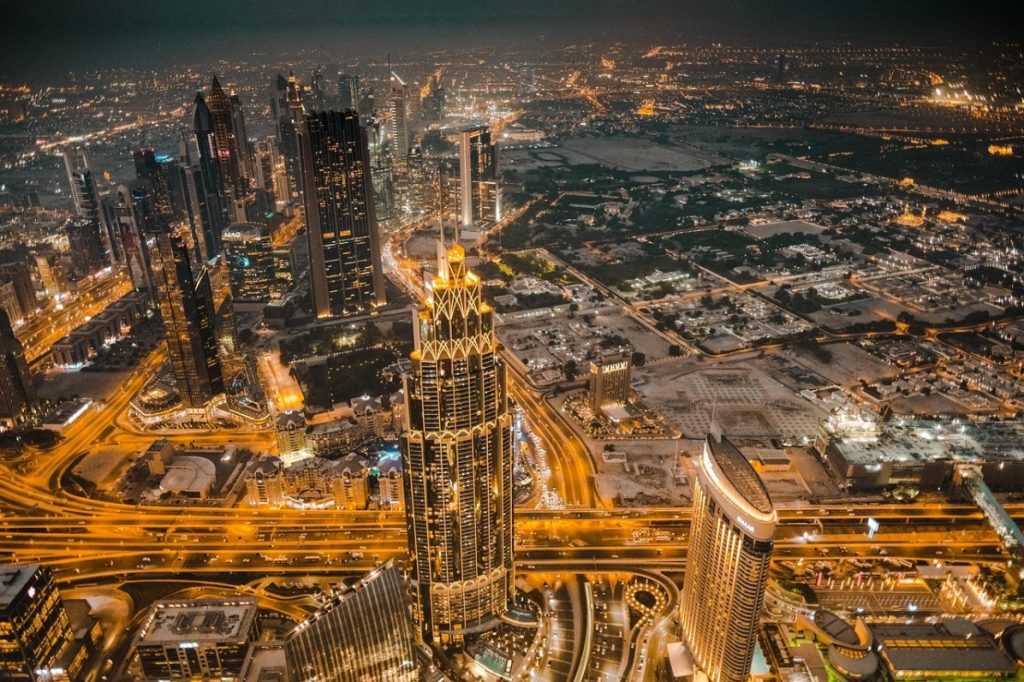
Dubai is one of those cities that immediately ignites wanderlust. With its ultra-modern skyline, exhilarating desert activities, high-profile shopping festivals, and numerous events, it’s impossible not to want to pack your bags right now. But here’s the deal: the key to a great trip to Dubai lies not with where to go but when to go. The city’s weather and cultural events should tip the scales for many visitors into the realm of experience. For example, experiencing the cool evenings under the desert stars or shopping for bargains during shopping festivals can transform a vacation. If you find planning everything a bit overwhelming, relax! The Tarzan Way, an AI-powered trip planner can handle it all. You can receive a custom itinerary designed to captivate and entice you, from desert safaris to sunset yacht cruises, while you settle in to think of your outfits. This guide will explore the best time to visit Dubai based on its weather, its festivals, and its events so that your holiday is enjoyable, enjoyable, and exhilarating. Dubai Weather Throughout the Year Dubai has only two moods: hot and hotter. But the good news is, Dubai weather in winter (November to March) is an absolute delight. Days are warm (24°C–28°C / 75°F–82°F), nights are cooler (15°C–18°C / 59°F–64°F), and you can comfortably explore the city without hiding indoors. Flights and hotels might be slightly pricier, but trust me, sipping karak chai while walking along Dubai Marina in December makes it worth every rupee (₹30,000–40,000 or AED 1,300–1,700 for mid-range hotels). Now, summer (June to September) is another story. Temperatures soar above 40°C (104°F), humidity can be brutal, and outdoor sightseeing is tricky. That said, it’s the best season for budget Dubai tourism, because hotels slash their rates almost by half. If you don’t mind living in air-conditioned bliss with occasional mall-hopping, you’ll save quite a bit. If you want the perfect mix of fun, comfort, and affordability, late October to mid-March is your golden window. Key Events & Festivals You Can’t Miss When is Ramadan in Dubai? Ramadan is one of the most unique times to experience the city. Dates shift every year (in 2025, it’s expected to start in February–March). While some restaurants close during the day, evenings come alive with incredible Iftar buffets, cultural shows, and night markets. If you’re worried – don’t be. Tourists are welcome, and respecting local customs (no eating in public before sunset) makes you part of the vibe. Visiting during Ramadan also often means discounted airfares and hotels. Dubai Shopping Festival Dates This is the Super Bowl of shopping! The Dubai Shopping Festival usually runs from late December to January, and it’s not just about buying handbags. Expect fireworks, raffles, concerts, and deals that’ll tempt even the most budget-conscious traveller. For example, that Burj Khalifa view ticket costing around ₹7,467 (AED 330)? You might snag combo passes at lower rates during DSF. Fashion, electronics, jewelry – you name it, it’s on sale. If you love a good bargain, time your trip for this. Dubai Events in Winter & Spring Apart from Ramadan and DSF, winter is packed with outdoor festivals – music shows, food carnivals, and art fairs. Events like Global Village (entry tickets start at ₹984 or AED 40) give you a glimpse of cultures from around the world. In March, you’ve got events like the Dubai Food Festival and beach parties, making it a lively month. No wonder so many travellers say that planning your Dubai itinerary around events is a smart move. Popular Attractions by Season Here’s where the fun begins. Timing your trip isn’t just about climate – certain Dubai attractions feel more magical in specific seasons. Winter (Nov–Mar) Perfect for Desert Safari (₹1,801 / AED 80), Miracle Garden, and walking around Old Dubai. Don’t miss a dinner cruise at Dubai Marina (₹4,322 / AED 190). Summer (Jun–Sep) Beat the heat with indoor attractions like Dubai Aquarium (₹2,593 / AED 114) or the Museum of the Future (₹3,481 / AED 153). Spring (Apr–May) Beach weather! Ideal for Jumeirah Beach, Kite Beach, or splurging on a private yacht ride (₹6,002 / AED 265). Autumn (Oct) A sweet shoulder season – fewer crowds, decent deals, and pleasant evenings to explore souks and street food. Want more offbeat ideas? Check out our blog on Top Free & Offbeat Things to Do in Dubai. Stay, Budget & Costs Let’s talk numbers, because planning a Dubai trip always comes down to rupees and dirhams. Mid-range hotels: ₹6,000–₹9,000 per night (AED 265–400) Luxury hotels: ₹15,000+ per night (AED 650+) Budget stays: Hostels start at ₹1,500 per night (AED 65) If you’re smart about timing, you’ll save a lot. For example: Winter peak season → Higher prices, but best experience. Summer → Huge discounts on Dubai hotels. Transport is also reasonable: Dubai Metro rides cost just ₹60 (AED 3) for short trips, while taxis cost ₹200–₹250 (AED 10–12) for the same. All in all, a 7-day Dubai itinerary can cost anywhere between ₹80,000 (AED 3,500) for a budget traveller to ₹2.5 lakh (AED 11,000) for someone who loves luxury. Sample Seasonal Itineraries To make it fun, here’s how you can plan your days depending on the season: Winter Dubai Itinerary (5 days): Desert Safari → Miracle Garden → Burj Khalifa → Global Village → Shopping Festival. Summer Dubai Itinerary (5 days): Museum of the Future → Dubai Mall Aquarium → Ski Dubai → Luxury Spa → Indoor theme parks. Ramadan Dubai Itinerary (5 days): Iftar hopping → Old Dubai souks → Dubai Creek → Evening desert safari → Shopping deals. See how the timing changes everything? Activities You Can Book Through The Tarzan Way, you can instantly book experiences like: Desert Safari with quad biking – from ₹1,801 (AED 80) Helicopter flight over Palm Jumeirah – from ₹16,855 (AED 740) Dubai Frame entry – ₹984 (AED 40) Sunset Dinner Cruise – ₹4,322 (AED 190) Burj Khalifa Top deck – ₹7,467 (AED 330) There are many more activities to explore with amazing
Top 10 Most Haunted Places in the World You Can Visit in 2025

Introduction: Haunted Travel Itinerary for 2025 It’s not always beaches and mountains that make travel fun. Sometimes it’s about mysteries. Imagine a haunted travel itinerary that takes you to the scariest places in the world on a list of haunted towns. From creepy castles to spooky forests, these places offer unforgettable trips full of ghost stories, unique activities, local food, and festivals. Here is a full list of the world’s most haunted places that you can visit in 2025. 1. Bhangarh Fort, India Many people call Bhangarh Fort the “most haunted place in India” because of the stories about its haunted ruins and ghosts. People aren’t allowed to enter the fort after dark, but you can look around during the day. Activities to Try: Visit the crumbling temples inside the fort, look for handmade goods in the villages nearby, and eat traditional Rajasthani cuisine. Unique Highlight: Combines scary folklore, history, and architecture. Pro Tip: Get a local guide to help you find secret spots and learn about hidden stories. Avoid missing secret spots. 2. The Tower of London, UK Royal executions and incarcerations took place at this famous location. It’s one of the spookiest places in London because of ghost sightings, particularly of Anne Boleyn. Activities to Try: See the Crown Jewels, go on the Yeoman Warders’ ghost stories tour and visit nearby pubs said to be haunted. Unique Highlight: A unique blend of paranormal experiences and British history. Pro Tip: To save time and money, purchase tickets in advance online. 3. Eastern State Penitentiary, USA The abandoned prison in Philadelphia, renowned for its eerie cellblocks. Ghostly whispers are frequently captured on tape by paranormal investigators. Activities to Try: Take part in live ghost hunts, visit art exhibits within the prison, or attend the “Terror Behind the Walls” Halloween festival. Unique Highlight: A prison-turned-cultural center with spooky nights. Pro Tip: For the best spooky haunting experience, visit during Halloween. 4. Château de Brissac, France Known as the “Giant of the Loire Valley,” Lady in Green haunts this castle. Activities to Try: Join evenings of classical music, take a wine tour through the castle vineyards, or spend the night for a chilling adventure. Unique Highlight: Where royal luxury meets eerie legends. Pro Tip: Make reservations for overnight stays as early as possible because they are limited and in high demand. 5. Monte Cristo Homestead, Australia This historic homestead is regarded as Australia’s most haunted house. Ghostly figures and glowing lights are reported by visitors. Activities to Try: Take part in escorted ghost tours, visit neighboring historical sites in Junee, and taste Australian bush cuisine. Unique Highlight: Tours are more intimate because it is still privately owned. Pro Tip: For the spookiest tales, take their candlelit night tour. 6. Edinburgh Castle, Scotland Packed with legends and history, Edinburgh Castle is home to a headless drummer and prisoner ghosts. Activities to Try: Take part in ghost walks in subterranean vaults, visit the Scottish National War Museum, and enjoy local bagpipe performances. Unique Highlight: A haunted fortress that hosts annual cultural festivals. Pro Tip: Put on layers of warmth. Even in the summer, Scotland’s nights can get cold. 7. The Stanley Hotel, USA Stephen King’s The Shining was inspired by this Colorado hotel. At night, guests frequently hear phantom piano notes. Activities to Try: Spend the night in a haunted room, take a ghost tour, and stargaze in the Rockies around the hotel. Unique Highlight: Combines paranormal travel with a luxurious stay. Pro Tip: For the ultimate ghostly experience, ask for Room 217. 8. Aokigahara Forest, Japan Known as the “Suicide Forest,” this dense forest is hauntingly silent and is said to be haunted by ghosts. Activities to Try: Discover the nearby lava caves, take a hike along the picturesque Mount Fuji trails, and sample authentic Japanese street cuisine in the nearby towns. Unique Highlight: A forest where the stillness itself seems supernatural. Pro Tip: For safety and respect, always travel with a certified guide. 9. Poveglia Island, Italy This Venetian island, notorious for its troubled past, was once a plague quarantine station. It is regarded by many as one of the most haunted islands in the world. Activities to Try: Reserve private boat tours, savor local seafood, and discover undiscovered canals in Venice. Unique Highlight: A completely abandoned island with chilling ruins. Pro Tip: Schedule your tours in advance because access is seasonal and limited. 10. Hoia Baciu Forest, Romania This forest in Transylvania is known as the “Bermuda Triangle of Romania.” Ghost encounters and UFO sightings have made it famous. Activities to Try: Take part in paranormal workshops in Cluj-Napoca, go on night hikes, and taste Romanian street food nearby. Unique Highlight: A circular clearing where no trees grow. Pro Tip: For safety, never go alone; always go in groups. Haunted Travel Planner (Sample Itinerary) 2-Day Haunted Itinerary (Edinburgh, Scotland): Day 1: Tour of Edinburgh Castle and Old Town Ghost Walk. Day 2: Exploration of vaults and a night of haunted storytelling in a pub. 3-Day Haunted Itinerary (For USA Visitors): Day 1: In Philadelphia, start with the exploration of the Eastern State Penitentiary. Day 2: Take a nighttime ghost tour and drive to the Stanley Hotel. Day 3: Dedicate the day exploring nearby Colorado ghost towns. Pro Tip: To balance out the spooky experience, always include a daytime sightseeing activity. Haunted Travel Costs & Budgeting It’s not always expensive to explore haunted places. Castles and prisons charge $20 to $100 to enter. Guided ghost tours are extra, and haunted hotels range from $150 to $300 per night. Pro Tip: Night tours have their own budget and are typically not covered by daytime tickets. So better to separate a budget for night tours with day tours. Festivals & Food at Haunted Destinations India: After visiting Bhangarh, taste fiery Rajasthani thalis. UK & USA: Celebrate Halloween festivals with costumes, themed drinks, and ghost hunts. Japan: Trips are made more memorable by the seasonal Japanese snacks like takoyaki and yakitori near Aokigahara. Romania:
Vaishno Devi Travel Guide 2025: Cost, Itinerary, Tips & How to Plan Your Yatra
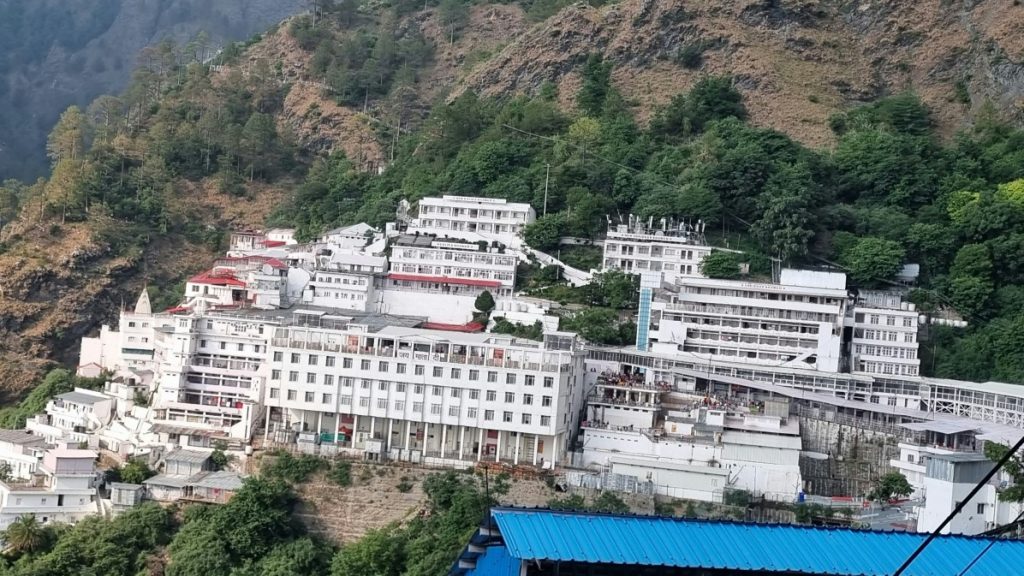
What’s in this Blog Why Vaishno Devi is a Must-Visit Pilgrimage How to Reach Vaishno Devi Best Time to Visit Vaishno Devi Yatra Registration & Permits Trip Cost & Budgeting Where to Stay (Katra & Nearby) Itinerary Suggestions – 2-Day and 3-Day Trip Plans Helicopter, Pony & Porter Services Things to Carry & Travel Tips Nearby Places to Visit FAQs Final Thoughts Why Vaishno Devi is a Must-Visit Pilgrimage Going to Vaishno Devi in 2025 is more than just a religious pilgrimage. It’s an experience rich in Himalayan beauty, culture, and faith. Vaishno Devi, one of India’s holiest shrines, is tucked away in Jammu’s Trikuta Hills. In the eyes of pilgrims, Mata Vaishno Devi grants the desires of those who come with pure devotion. In addition to the spiritual aspect, the trip offers beautiful trekking routes, friendly locals, and the opportunity to discover hidden treasures. This vaishno devi travel guide includes all the necessary information for anyone planning a vaishno devi trip 2 days itinerary or vaishno devi trip 3 days itinerary. Pro Tip: For smoother planning, reserve your lodging and yatra registration at least two months in advance. How to Reach Vaishno Devi There are multiple transport options to reach Vaishno Devi : By Train: The closest significant train station is Jammu Tawi, which is 48 kilometers from Katra. It is connected to Delhi, Mumbai, and Kolkata by regular trains. By Flight: The closest significant airport is Jammu Airport, which is 50 km away. From there,buses and taxis are too frequently available to travel to Katra . By Road: As Katra has brilliant road connections to Srinagar, Udhampur, and Jammu to travel by road. There are plenty of deluxe buses and taxis too. The actual yatra starts with a 13-kilometer trek to the Bhawan (shrine) from Katra. Pilgrims have three options: walk, rent ponies, or take a helicopter. Pro Tip: To prevent travel fatigue before beginning the trek, get to Katra one day early. Best Time to Visit Vaishno Devi Although the shrine is open all year, there are special experiences to be had in different seasons: Spring (March–May): Beautiful scenery and pleasant weather. Monsoon (July–September):Fewer tourists, but be cautious of landslides. Autumn (October–November):Clear skies and joyous occasions like Navratri. Winter (December–February):snow-covered pathways, fewer tourists, and serene darshan. Pro Tip: Plan during Navratri, but make reservations well in advance, if you want a festive atmosphere. Yatra Registration & Permits Before beginning the yatra, each pilgrim is required to complete the Vaishno Devi online registration. Registering is free and can be done at Katra counters or on the official Shrine Board website. A yatra slip is mandatory at checkpoints. Rules to follow: Carry a valid ID proof. Children under the age of five are not required to register. Refrain from bringing big bags or prohibited items. Pro Tip: For easy passes and updates, download the “Mata Vaishno Devi Yatra Registration” mobile app. Trip Cost & Budgeting The Vaishno Devi trip cost is determined by the services, travel, and lodging selected: Transport (Delhi to Katra): ₹1,500–₹3,000 by train, ₹3,500–₹6,000 by flight. Stay in Katra: The cost of under-budget dharamshalas will be in the range of ₹500–₹1,000 and mid-range hotels is of ₹1,500–₹3,000. Food: The per day price of simple vegetarian meals is of around ₹300–₹600. Helicopter Ride: The estimated cost of helicopter’s one way ride is ₹1,840 per person. Other Expenses: Ponies, palanquins, or porters cost extra. While a comfortable trip may cost ₹12,000 to ₹15,000, a more affordable trip can be planned for ₹6,000 to ₹8,000 per person. Pro Tip: To reduce the cost of food while trekking, bring snacks and reusable water bottles. Where to Stay (Katra & Nearby) There are many different lodging options in Katra: For Pilgrims: Dharamshalas run by trusts and guesthouses near the shrine. For Families: There are under budget accommodations with shuttle services. Vegetarian dining options are too available. For Comfort Seekers: Premium hotels offering mountain views and spa treatments. Pro Tip: To save time ,its better to choose a hotel near the yatra registration counter. Itinerary Suggestions – 2-Day and 3-Day Trip Plans 2-Day Vaishno Devi Itinerary Day 1: Get to Katra, register, and begin the hike that evening. Arrive at Bhawan Darshan at night. Day 2: Go back to Katra in the morning, check out the local marketplace, and then leave for Jammu. 3-Day Vaishno Devi Travel Planner Day 1: Arrive in Katra, relax, and visit neighboring temples. Day 2: Trekking begins early in the morning, with a visit to Bhairon Temple and darshan at Bhawan. Day 3: Before departing, return to Katra and explore Patnitop or Shiv Khori. Pro Tip: Add an extra day if you want to comfortably visit neighboring attractions. Helicopter, Pony & Porter Services Helicopter: For the vaishno devi helicopter booking, use the Shrine Board website to make an online reservation. It takes eight minutes to travel from Katra to Sanjichhat. Ponies & Palanquins: For those who are unable to trek, it is available from Katra. Porters: During the yatra, assist with carrying children or luggage. Although prices vary, in order to prevent overcharging, payments must be made at authorized counters. Pro Tip: Because spots fill up quickly, reserve helicopter rides 60 days in advance. Things to Carry & Travel Tips Light woolens or jackets depending on the season. Comfortable walking shoes. Painkillers, prescription medications, and a first aid kit. For night trekking,Torchlight or headlamp is must to carry. Energy bars and dry fruits for endurance. Pro Tip: Since plastic bags are prohibited near Katra and the shrine, don’t bring them. Nearby Places to Visit After your darshan, if you have time, then check out these attractive places to visit near vaishno devi: Patnitop: A hill station featuring adventure sports and meadows. Shiv Khori: A cave shrine dedicated to Lord Shiva. Jhajjar Kotli: It has a beautiful picturesque riverside picnic area. Bahu Fort, Jammu: It’s a historic fort featuring a Kali temple. Pro Tip: Add an extra day to your itinerary so that you can visit Shiv
Dubai on a Budget: Tips for Affordable Travel
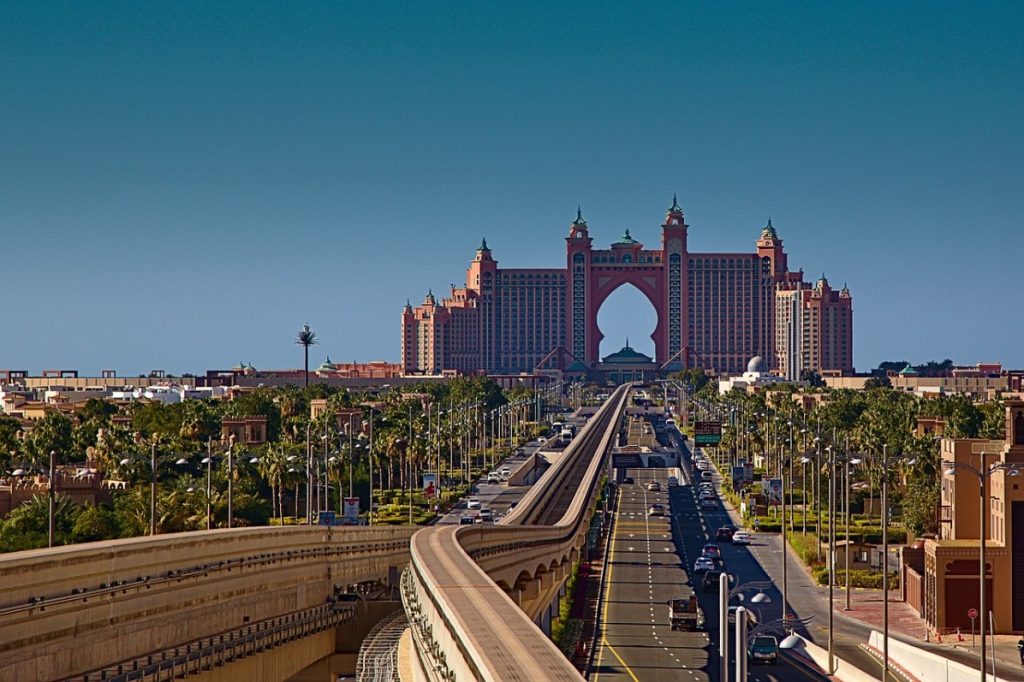
When most people think about Dubai, they probably picture the skyscrapers, the shopping malls, and the resorts. But here’s a shocker: you don’t have to spend a lot of money in Dubai! When careful and thoughtful planning is organized, a budget Dubai trip cost from India can be surprising—of course, in a good way! So, whether you are a student, a backpacker traveling solo, or a family on a budget, you can visit and enjoy Dubai without going overboard. The best part? With The Tarzan Way, an AI-generated personalized trip planner, you will be able to create a budget, interest, and travel style-based itinerary for your trip. It’s like a traveling buddy that helps you plan smart and keep costs within reason. Why Travel Dubai on a Budget? Despite its name as a luxury destination, the truth is that Dubai is very welcoming to budget travellers. Between cheap meals in Indian restaurants in Karama, free beach access along Jumeirah, and inexpensive, efficient public transport services, Dubai has something for everyone. The key is the timing of your trip, smart bookings and thoughtful experiences—all of which will maximize value. If you’re still wondering, “How to travel Dubai on a tight budget?”– this guide is for you. Flights – Cheap Flights from India to Dubai One of the most significant costs is airfare. Fortunately, given that Dubai is a very well-connected city to India and that there are many airlines on this route, prices can be influenced by competition. Tips about cheap flights India to Dubai: You can secure the best fares by booking 3–4 months in advance. Low-cost airlines like Air India Express, SpiceJet and IndiGo also tend to sell ₹8,000–10,000 one-way fares. You can also sign-up for price alerts and check partner sites and comparison booking sites. If you have flexibility with dates, it usually equals lower-cost fares. Flying on off-peak days (usually mid-week) is also usually less expensive. For those watching expenses, tracking off-peak travel Dubai deals from India is the key. Cheapest Time to Visit Dubai from India When do you want to go. The most cost-effective time to travel to Dubai from India is generally during the summer months (June-August). The weather can be extremely hot, but this is when hotels and flights offer high discounts. Shoulder seasons – September to early November and late February to March – can also provide some good deals but, again, are usually considered manageable weather. If you want to prioritize economy over comfort, you should avoid going in December or New Year’s, as this is when Dubai experiences its highest prices. Visa – Dubai Visa Cost for Indians 2025 Plan an India trip? You’ll need a visa. Here is what to know: Dubai visa for Indians cost 2025 range from ₹6,500–₹8,500 depending on the provider. Typically, it only takes a couple of working days to process (3–5). If you are traveling for a short time, a 14-day tourist visa is the cheapest option. And what about Dubai visa on arrival Indians eligibility & cost? As of now, Indian passport holders with a valid US/UK/Schengen visa are eligible to apply for a visa on arrival in Dubai. The fee is approximately ₹2,000–₹2,500, which would be easy for any frequent international travel to handle. Accommodation – Affordable Hotels in Dubai for Indian Tourists There are many options for accommodation than just luxurious resorts. Travelers on a budget will have plenty of places to stay at across the price spectrum: Hostels and guesthouses: Start around ₹1,500–₹2,000 a night. Budget Hotel: ₹3,000 to ₹5,000 a night for basic services. You can consider cheap options in Deira or Bur Dubai as opposed to staying Downtown. Some of the cheapest hotels in Dubai for Indian tourists are located close to the metro and also save time and money from transportation. Food – Cheap Food Options in Dubai for Budget Travellers Dubai is a paradise for food enthusiasts. If you seek luxurious dining, you can find it there. Conversely, if you’re looking to maximize your travels as a budget traveler, you can find an infinite number of food options that are budget-friendly. For budget-oriented food options in Dubai: Dubai street food costs: Shawarma for ₹150, falafel for ₹120, or a full Indian thali at Karama between ₹400 – ₹600. Super —an amazing idea for grab-and-go food is hitting up places like Carrefour -or Lulu (both grocery stores) to grab a quick meal. Old Dubai has cheap meals in Pakistani, Indian, and Filipino places that serve a generous meal for under ₹700. Food can be as cheap or expensive as you want to make it while in Dubai. It’s all about where you go to eat. Transport – Saving Money in Dubai with Metro & Buses Dubai’s metro and buses are clean, safe, and efficient. A Nol Card (public transport pass) starts from ₹500–₹1,000, depending on zones. Metro rides are as low as ₹60–₹150. Daily passes are cheaper if you plan to hop around. If you compare saving money in Dubai transport like metro/buses vs taxis, public transport wins, hands down. A short taxi ride may cost you 700-800 rupees, with the same coverage in the metro costing less than 150 rupees. Budget Itineraries – Dubai in 5 Days If you are curious about what a best budget itinerary Dubai 5 days looks like, then here is a sample itinerary: Day 1: Explore Old Dubai – Al Fahidi, spice souks, and gold souk (free to wander). Day 2: Jumeirah Beach (free), stroll the Dubai Marina, and have dinner at Karama for inexpensive food. Day 3: Burj Khalifa (the cheapest tickets are online), the Dubai Mall, and then watch the fountain show at night (free). Day 4: Oregon Desert Safari budget package (₹2,500-₹3,500) and an evening creek stroll. Day 5: Miracle Garden (entry fee is affordable) and then Global Village (cheap eats + entry). This mix balances some free & cheap things to do in Dubai that are must-sees while you are visiting. Free & Cheap Things to
Goa Beyond Beaches: Explore Culture, Heritage & Local Life
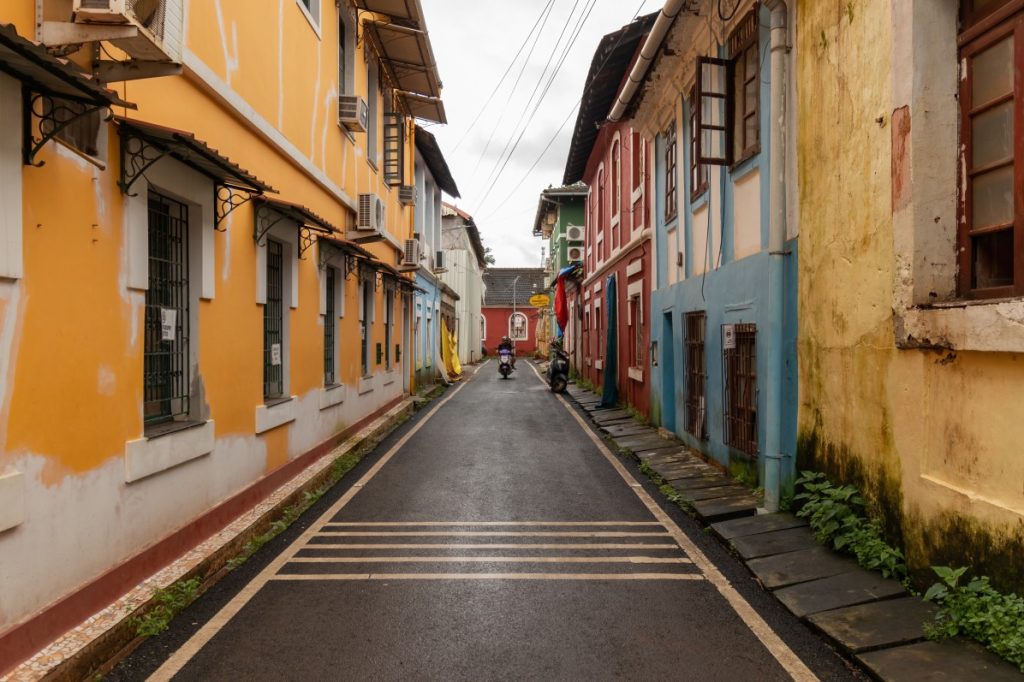
When you think of Goa, the first thing that probably comes to mind is sandy beaches, sun-drenched parties, and exciting nightlife. However, Goa is a lot more than that, blending together all of its Portuguese influence, its ancient temples, colorful festivals, and secret traditions to give travelers a real experience that is much fuller and more enriching. In this blog, we will take you to Goa beyond beaches – through its cultural roots, historical sites, heritage villages, art, culinary offerings, music, and festivals. And for everyone, whether you love history, enjoy cultural trips, or are just looking for another side of Goa, this blog will help you with your trip. We have made it simple for you to plan your trip by providing you with a helpful AI powered personalized travel planner, The Tarzan Way, which curates experiences just for you. What’s in this Blog Goa’s Unique Cultural Identity Portuguese & Colonial Heritage Temples, Churches & Spiritual Landmarks Goan Festivals & Celebrations Heritage Villages & Old Goa Charm Art, Music & Local Traditions Food & Culinary Heritage Museums & Historical Landmarks Suggested Itinerary: Goa Beyond Beaches Things to Remember Before You Go FAQs Final Thoughts Goa’s Unique Cultural Identity Goa is frequently described as the crossroads of the East and the West. Its Portuguese colonial history has resulted in breathtaking architecture, food that is a fusion of European and Indian, and cultural traditions, making it a hub for Goa cultural experiences. Goa feels distinct from other places in India because it has a unique mix of relaxed village life alongside lively cosmopolitan culture. Portuguese & Colonial Heritage Goa was ruled by the Portuguese for over 450 years. Their strong impact can be seen everywhere within the space of Goa, from churches in the Baroque-style to colonial mansions with ports and pillars. The Goa heritage sites are intact and respectfully maintained. Basilica of Bom Jesus: This site is a UNESCO World Heritage Site and houses the mortal remains of St. Francis Xavier. Se Cathedral: Recognized for its golden bell and stunning Portuguese architecture Goa. Fontainhas (Latin Quarter, Panjim): A lively neighborhood boasting Portuguese-style houses, numerous balconies, and narrow lanes in-between. Heritage Mansions: The Palácio do Deão and Braganza House represent Indo-Portuguese architecture. For hidden experiences near beaches, read: Best Hidden Beaches in Goa for Peaceful Escape. Temples, Churches & Spiritual Landmarks In addition to the spectacular churches, Goa has ancient Hindu temples, showcasing the spiritual blend in all its richness. Mangeshi Temple: This temple is dedicated to Lord Shiva and has an impressive entrance and a lamp tower with seven stories. Shantadurga Temple: A peaceful temple complex located in Ponda. The Church of St. Cajetan: This church is constructed in the image of St. Peter’s Basilica in Rome. The combination of Hindu and Christian worship sites illustrate Goa religious sites and the state’s unique cultural faith and coexistence. Goan Festivals & Celebrations Goa festivals are not just events – they are vibrant cultural showcases. Carnival (February): A Portuguese legacy with parades, dances, and music. Sao Joao (June): Celebrated with water games and vibrant rituals. Shigmo (March): A Hindu spring festival with folk dances and colorful parades. Christmas & New Year: The most vibrant season with midnight masses, street lights, and festivities. If you love festivals, check out Goa Bliss: AI-Guided Wellness Retreats for holistic cultural experiences. Heritage Villages & Old Goa Charm If you want to truly experience Goa’s heart, step away from the beaches and explore Goa’s heritage village life. Chandor: Known for Portuguese mansions and heritage homes. Loutolim: A quaint village with colonial homes and the Big Foot Museum. Old Goa: A UNESCO site with historic churches and museums. Saligao & Siolim: Villages that preserve Goan rural lifestyle with scenic charm. Art, Music & Local Traditions Goa is the hub of creativity – art and music flow in Goa’s culture. Goan Folk Music: Mando and Fado are traditional Goan musical styles. Goa Chitra Museum: Displays traditional farming tools and Goan heritage. Kala Academy: A cultural hub hosting exhibitions and performances. Local Dance Forms: Fugdi, Dhalo, and Dekhni depict Goan traditions. Music lovers should not miss Goa’s Nightlife: A Guide to the Lit Nightlife for a modern contrast. Food & Culinary Heritage Goan food & cuisine is a cultural experience in itself – blending Konkani, Portuguese, and coastal flavors. Signature Dishes: Vindaloo, Xacuti, Bebinca (dessert), Sorpotel, and Sannas. Seafood: Fresh fish curries and prawn balchao. Markets: Mapusa and Panjim markets for spices and local snacks. Feni: A local cashew liquor that’s part of Goa’s cultural identity. Foodies should read Top Restaurants in Goa and Gokarna for dining recommendations. Museums & Historical Landmarks Some of Goa’s cultural treasures are preserved in its museums: Goa State Museum: Documents Goan history, art, and culture. Naval Aviation Museum: India’s only museum dedicated to naval aviation. Big Foot Museum, Loutolim: Depicts rural Goan life and legends. Suggested Itinerary: Goa Beyond Beaches Day 1: Explore Old Goa – Basilica of Bom Jesus, Se Cathedral, St. Augustine ruins. Day 2: Explore Panjim – Fontainhas walk, local markets, art galleries. Day 3: Go for heritage villages like Chandor & Loutolim, Big Foot Museum. Day 4: Have the cultural experiences – attend a folk performance, cooking class, or Fado night. Day 5: Explore local cuisine, museums, and end with a wellness retreat. Planning a longer trip? Read: Top Attractions to Include in Your Goa Travel Itinerary and South Goa Unplugged: Exploring the Quieter Side. Things to Remember Before You Go Dress modestly when visiting temples and churches. Carry cash, especially in rural heritage villages. Hire local guides for deeper cultural insights. Respect traditions and ask permission before photographing locals. Use The Tarzan Way for curated heritage tours and AI-powered trip planning. FAQs Q. What is special about Goa? Goa is special for its mix of beaches, Portuguese heritage, vibrant festivals, and rich food culture. Q. What is special in Goa for girls? Shopping in flea markets, wellness retreats, yoga, and safe nightlife options make Goa appealing for girls.



